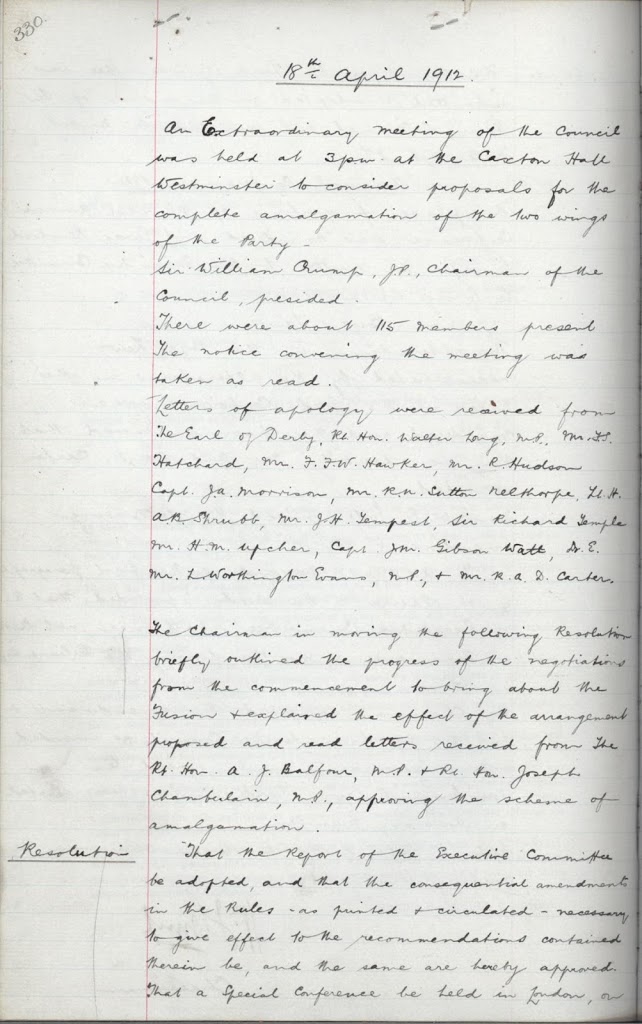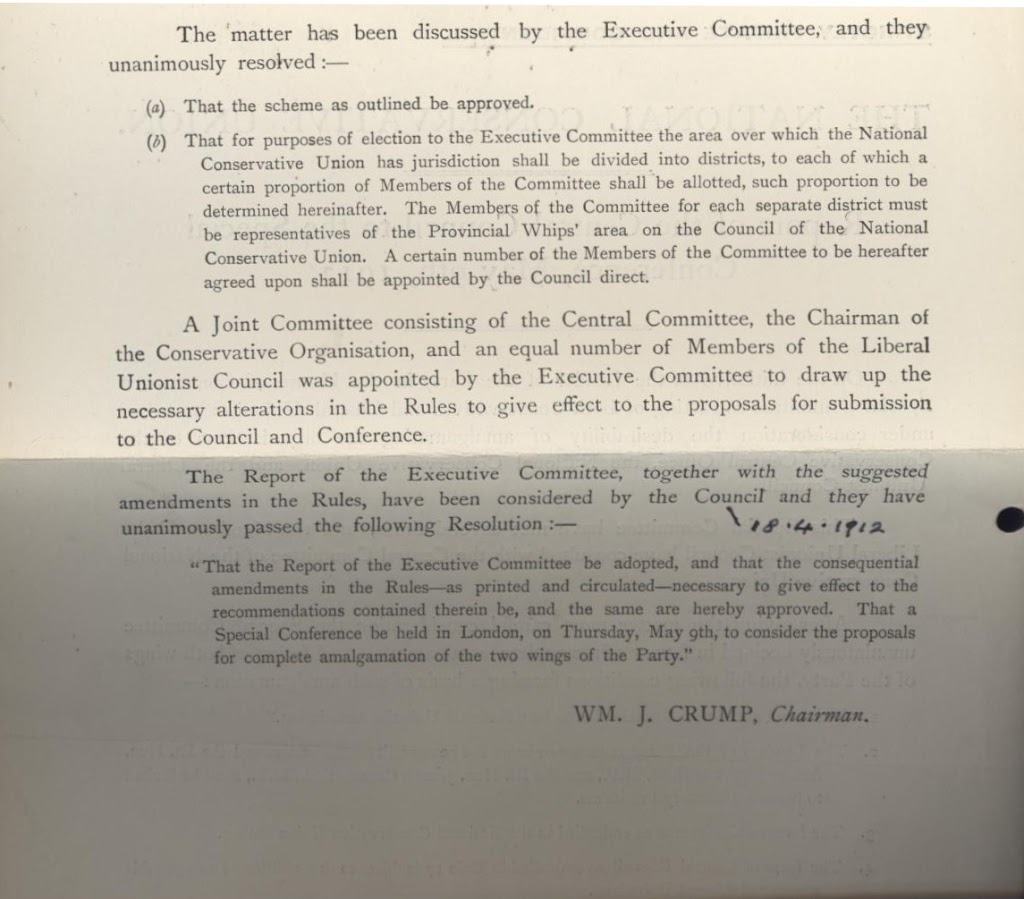A guest blog post by Alistair Lexden, the official historian of the Conservative Party:
On 9 May 1912 large numbers of Conservatives descended on the Queen’s Hall in London, best-known at that time as the home of Sir Henry Wood’s Promenade Concerts (which thirty years later were forced by the Luftwaffe to move to the Royal Albert Hall). The Tories came not to listen to sublime music, but to make historic changes to the Party’s organisation and name.
The conference had been convened by the National Union of Conservative Associations to which most, but not all, of the Party’s constituency associations belonged. The Chairman of the National Union, Sir William Crump, a self-made City businessman and Islington’s first mayor, moved the adoption of a report by a Special Committee which recommended the creation of a new body to be known as the National Unionist Association of Conservative and Liberal Unionist Organisations. ‘That’, he said, ‘would in future be the name of the central organisation of both wings of the party’. (A few years later it was simplified, becoming the National Union of Conservative and Unionist Associations.)
Above: Notes of an 18 April Central Council meeting discussing proposals: ‘An extraordinary meeting of the Council was held at 3pm at the Caxton Hall Westminster to consider proposals for the complete amalgamation of the two wings of the Party’
Above: ‘The Chairman informed the Executive Committee that on the initiative of the Leader of the House of Commons a Special Committee of 10 members … have had under consideration the desirability of amalgamating the organisations of the Conservative Central Office, the National Conservative Union and the Liberal Unionist Council.’ (Executive Committee minutes, 15 March 1912, NUA 4/1/2)
Over the years since its emergence in 1886 as fierce opponent of Gladstone’s Home Rule scheme for Ireland, the Liberal Unionist Party, led pugnaciously in the Commons by Joe Chamberlain, had drawn so close to the Conservatives that the two Parties had come to operate in practice as two wings of a single entity, known generally as the Unionist Party, though the name had no official status. The historic conference a century ago united them formally. Crump’s motion was carried ‘ without a single dissentient’.
Above: Both the Executive and the Council had passed the resolution calling for the 9 May conference
Joe Chamberlain, incapacitated by a stroke six years earlier, sent of message of warm approval. ‘I believe’, he said, ‘that both wings of the party will reap advantage from an amalgamation which will give to the Unionist Party as a whole a single central organisation on a popular and representative basis’.
Up until the day before the conference the Conservatives had planned to ditch their name completely. They had come to be called Unionists in everyday usage, and preferred to be known as such for years to come. They agreed in early 1912 under the terms of the merger to adopt formally the title of the National Unionist Association (or Unionist Party for short). Only forceful last-minute protests saved the historic name. Hastily siding with the protesters, Crump explained that
‘they had had some strong criticism—he thought just criticism—of the name they proposed to adopt. (Hear,hear.) After consultation as late as the previous night with the Liberal Unionists they had decided to meet the objections—the great objection was the dropping of the word Conservative—by making their name the National Unionist Association of Conservative and Liberal Unionist Organisations. [Cheers.]’
Above: The Party structure in 1964, still using ‘National Union’ (PUB 89/3)
So the word Conservative did not after all disappear from the political lexicon: and between the wars under Stanley Baldwin the Party reverted to it, except in Scotland where the combined forces did formally become the Unionist Party in 1912 and so remained until 1965. On this day a century ago it was the campaign to defeat the Liberal Party’s third attempt to give the whole of Ireland self-government that made Unionism more important to the Party than anything else. Crump concluded by asking the Queen’s Hall conference
‘to show the United Kingdom and Ireland that they were prepared to stand shoulder to shoulder as a fused organisation [with the Liberal Unionists] to help in every way their brethren of Ulster, the loyalists who were calling on Englishmen to come to their help. [Loud cheers]’.
Alistair Lexden is the Party’s official historian; full details of his historical writing can be found on his website www.alistairlexden.org.uk. This article draws on papers in the Conservative Party Archive at the Bodleian Library in Oxford, copies of which were kindly supplied by the Party’s Archivist, Jeremy Mcllwaine.




